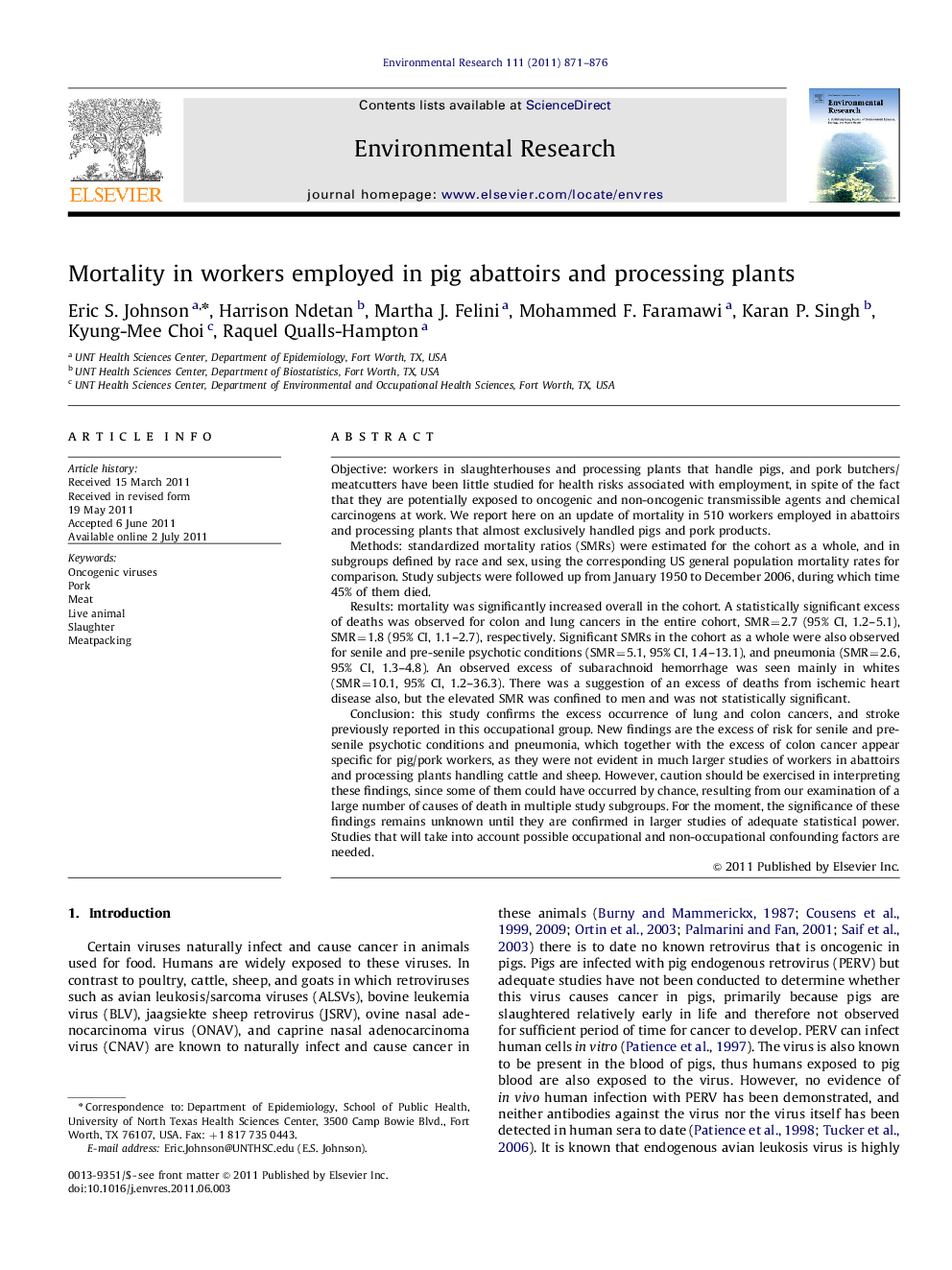| Article ID | Journal | Published Year | Pages | File Type |
|---|---|---|---|---|
| 4470221 | Environmental Research | 2011 | 6 Pages |
Objective: workers in slaughterhouses and processing plants that handle pigs, and pork butchers/meatcutters have been little studied for health risks associated with employment, in spite of the fact that they are potentially exposed to oncogenic and non-oncogenic transmissible agents and chemical carcinogens at work. We report here on an update of mortality in 510 workers employed in abattoirs and processing plants that almost exclusively handled pigs and pork products.Methods: standardized mortality ratios (SMRs) were estimated for the cohort as a whole, and in subgroups defined by race and sex, using the corresponding US general population mortality rates for comparison. Study subjects were followed up from January 1950 to December 2006, during which time 45% of them died.Results: mortality was significantly increased overall in the cohort. A statistically significant excess of deaths was observed for colon and lung cancers in the entire cohort, SMR=2.7 (95% CI, 1.2–5.1), SMR=1.8 (95% CI, 1.1–2.7), respectively. Significant SMRs in the cohort as a whole were also observed for senile and pre-senile psychotic conditions (SMR=5.1, 95% CI, 1.4–13.1), and pneumonia (SMR=2.6, 95% CI, 1.3–4.8). An observed excess of subarachnoid hemorrhage was seen mainly in whites (SMR=10.1, 95% CI, 1.2–36.3). There was a suggestion of an excess of deaths from ischemic heart disease also, but the elevated SMR was confined to men and was not statistically significant.Conclusion: this study confirms the excess occurrence of lung and colon cancers, and stroke previously reported in this occupational group. New findings are the excess of risk for senile and pre-senile psychotic conditions and pneumonia, which together with the excess of colon cancer appear specific for pig/pork workers, as they were not evident in much larger studies of workers in abattoirs and processing plants handling cattle and sheep. However, caution should be exercised in interpreting these findings, since some of them could have occurred by chance, resulting from our examination of a large number of causes of death in multiple study subgroups. For the moment, the significance of these findings remains unknown until they are confirmed in larger studies of adequate statistical power. Studies that will take into account possible occupational and non-occupational confounding factors are needed.
► This is one of the few studies on mortality in pig abattoir/processing plant workers. ► The average follow-up is suitable for studying cancer and other chronic diseases. ► The findings show excess of certain cancers and other diseases not reported before. ► The results also have serious public health implications for the general population. ► Nested case-control studies are needed to implicate specific occupational exposures.
